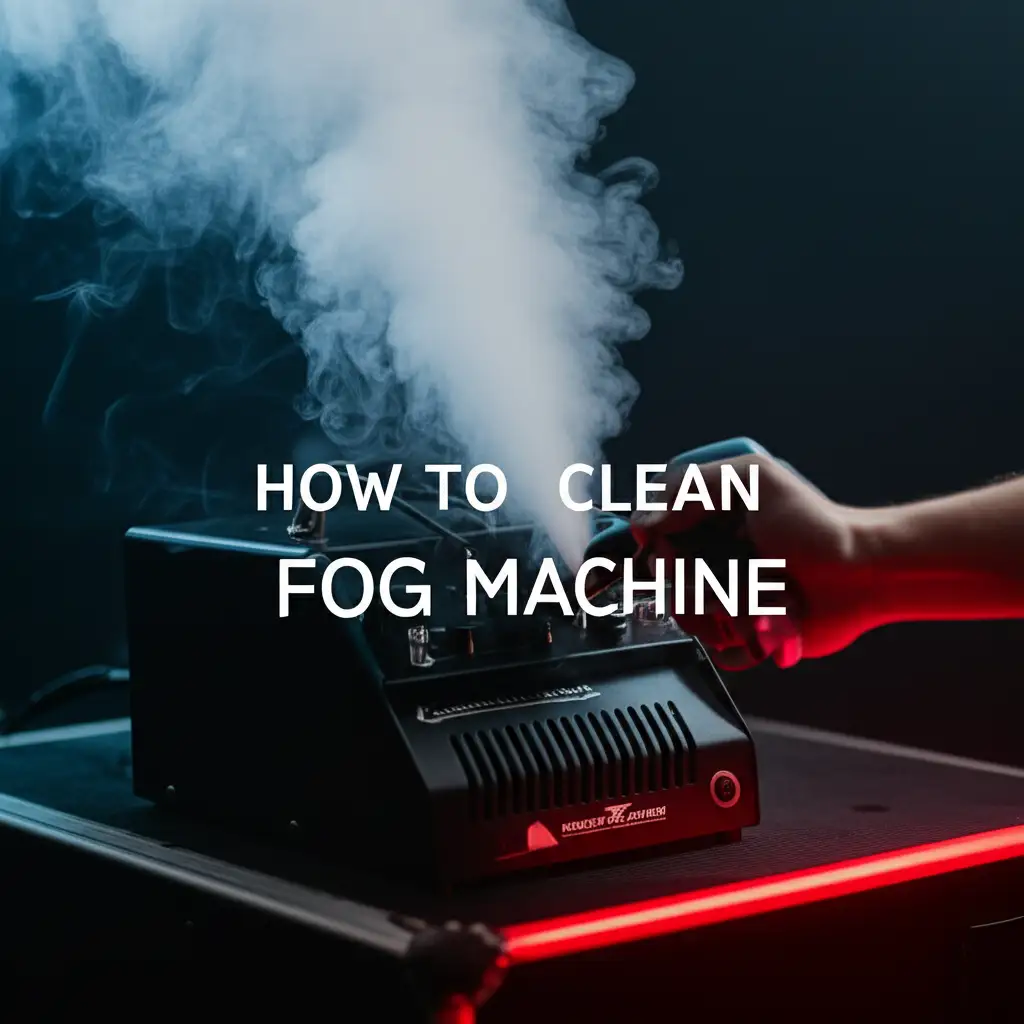· Equipment Maintenance · 13 min read
How To Clean Grip Tape

Restore Your Grip: How To Clean Grip Tape Effectively
Do you remember that fresh, gritty feel of new grip tape? It sticks to your shoes like glue, giving you amazing control. Over time, however, dirt, dust, and grime build up. This makes your grip tape less effective. It loses its bite and can even become slick. Learning how to clean grip tape is essential. It helps maintain performance, prolongs the life of your board or scooter, and keeps you safer.
This guide explores simple yet effective methods for cleaning your grip tape. We cover everything from quick touch-ups to deep cleaning. You will learn about the right tools and techniques. We also provide tips for different types of grip tape and how to keep it cleaner for longer. Get ready to bring back that new board feeling!
Takeaway:
- Regular cleaning maintains grip and extends the life of your tape.
- Dry brushing works for light dirt; water and mild soap are for deeper grime.
- Special tools like grip tape cleaners and rubber erasers simplify the process.
- Prevention, like wiping shoes, helps keep grip tape cleaner longer.
To clean grip tape, use a stiff brush to remove loose dirt. For deeper grime, apply a small amount of mild soap and water with a soft brush, scrub gently, and blot dry immediately. Allow it to air dry completely before use to restore optimal traction and prevent damage.
Why Cleaning Your Grip Tape Matters for Performance and Safety
Your grip tape is vital for control and safety, whether you ride a skateboard, scooter, or use tools with grippy handles. It provides the necessary friction between your feet and the board. This friction lets you execute tricks, make turns, and maintain balance. A dirty surface reduces this crucial grip. Dirt and dust fill the small pores of the tape, making it smooth.
When grip tape loses its texture, your feet can slip easily. This increases the risk of accidents and injuries. Imagine trying a trick with slippery grip tape; it just will not work. Cleaning your grip tape restores its gritty surface. It brings back the sharp edges of the sandpaper-like material. This means better control and a safer ride for you.
Beyond safety, clean grip tape also helps with performance. A firm grip lets you put more power into your movements. This results in higher jumps and more precise landings. It also makes your board more responsive. Furthermore, dirt and debris can slowly wear down the tape itself. Regular cleaning extends the overall lifespan of your grip tape. This saves you money in the long run. Keeping it clean is a simple step for better riding and a longer-lasting board.
Essential Tools and Materials for Effective Grip Tape Cleaning
Having the right tools makes cleaning grip tape much easier and more effective. You do not need many specialized items. Most supplies are simple and readily available. Start by gathering everything before you begin the cleaning process. This ensures a smooth and efficient session.
First, you will need a stiff-bristled brush. A wire brush works well for tough dirt. You can also use a stiff nylon brush or an old toothbrush for smaller areas. These brushes help dislodge dirt without damaging the tape’s texture. A specialized grip tape cleaning block or rubber eraser is also very useful. These blocks are designed to lift dirt particles directly from the tape’s surface. They work like a large eraser.
Next, prepare your cleaning solutions. For light cleaning, simply use water. For deeper grime, a mild soap solution is ideal. Dish soap is often a good choice. Avoid harsh chemicals like bleach or strong degreasers. These can damage the adhesive or material of the grip tape. A spray bottle can help apply the solution evenly.
Finally, have some old towels or microfiber cloths ready. These are for blotting away excess moisture. You also need a clean space where you can let your board air dry. Proper tools ensure you clean your grip tape safely and thoroughly. They help keep your gear in top shape.
The Dry Brush Method: Quick Maintenance for Your Grip
The dry brush method is your first line of defense against dirty grip tape. It is perfect for routine maintenance and removing light surface dirt. This method is quick, easy, and requires minimal supplies. You can do it often to keep your grip tape performing its best. This method helps prevent dirt from embedding deep into the tape’s texture.
To use the dry brush method, you only need a stiff-bristled brush. A wire brush is good for this, but a stiff nylon brush also works. Start by holding your board or scooter securely. You want to make sure it does not move while you are brushing. Begin brushing the grip tape surface with firm, short strokes. Brush in one direction first, then change direction. This helps dislodge dirt from all angles.
Focus on areas where dirt tends to build up. These are often around the edges and where your feet rest most often. You will see dust and dirt lifting off the tape. Brush it off the board onto the ground. Avoid pressing too hard. You want to remove dirt, not damage the grit. This simple dry brushing can significantly improve your grip. It maintains the abrasive quality of the tape. Make this a regular part of your cleaning routine.
For persistent marks or lighter scuffs that the brush misses, a grip tape cleaning block or an old rubber eraser can be effective. Simply rub the block firmly over the dirty areas. The friction helps pull out embedded dirt. This method is particularly useful for light colored grip tape which shows dirt more readily.
Deep Cleaning Grip Tape: Water and Mild Soap Technique
Sometimes, dry brushing is not enough. When dirt, mud, or stubborn grime builds up, you need a deeper clean. The water and mild soap technique is ideal for this. It helps lift embedded dirt without harming your grip tape. This method requires a bit more care, but the results are worth it.
First, gather your supplies: a stiff brush, a small amount of mild dish soap, water, and an old towel. You also need a spray bottle or a small bowl for the water mixture. Mix a few drops of dish soap with water in the spray bottle or bowl. You want a very dilute solution. Too much soap can leave a residue.
Next, carefully apply the soap solution to a small section of the grip tape. Do not soak the entire board. Use a spray bottle for even application, or dip your brush into the solution and lightly dab the tape. Use your stiff brush to gently scrub the wet area. Use circular motions or short back-and-forth strokes. You will see the dirt start to come out of the tape. This is similar to how you might clean duct tape residue from a surface. Focus on the grimiest parts.
After scrubbing a section, immediately blot it with a clean, dry towel. This removes dirty water and excess moisture. Do not let the water sit on the grip tape for too long. Repeat this process section by section until the entire board is clean. Once finished, let the board air dry completely. Place it somewhere with good airflow. Avoid direct sunlight or heat, which can damage the tape. Ensure it is bone dry before riding again. This prevents moisture from weakening the adhesive.
Tackling Stubborn Stains: Specific Solutions for Grip Tape
Stubborn stains, like mud, grease, or sticky residues, require more targeted approaches. Standard brushing and soap may not be enough. Do not worry; there are still ways to clean these tough spots. We use specific tools or gentle solvents for these challenges. Always test a small, hidden area first to avoid damage.
For sticky residues, like remnants from stickers or certain types of tape, a rubber cement eraser can work wonders. This type of eraser is designed to pick up adhesive. Rub it gently over the sticky spot. The eraser should lift the residue. For tougher sticky spots, you might use a tiny amount of rubbing alcohol on a cloth. Dab the cloth onto the residue, then gently rub. Be very careful with alcohol; it can affect some adhesives. It is similar to how you might clean tape residue off glass, but gentler.
Mud and clay often dry hard on grip tape. If dry brushing does not remove it, use the water and soap method with a little more scrubbing. For very stubborn, dried mud, you can carefully use a plastic scraper or old credit card to chip away larger pieces before brushing. Be extremely gentle to avoid tearing the grip tape.
Some people recommend using specialized grip tape cleaners. These products are formulated to be safe for grip tape adhesive. They often come in spray or liquid form. Follow the product instructions carefully. They usually involve spraying, scrubbing, and then wiping dry. Always ensure the grip tape is completely dry before using your board again. Proper drying prevents moisture problems.
Special Considerations for Different Grip Tape Types
Not all grip tape is the same. While the core cleaning principles apply, some variations require slightly different care. Understanding these differences helps you clean your grip tape effectively and safely. You want to match your cleaning method to the grip tape material.
Most skateboards and scooters use a black, sandpaper-like grip tape. This type is generally durable and responds well to dry brushing and the water-and-soap method. The grit is robust enough to handle firm scrubbing. This is the most common type and the primary focus of our general cleaning advice.
Clear grip tape, often seen on longboards or custom setups, needs a bit more attention. Dirt and scuffs show much more prominently on clear grip tape. While dry brushing works, deep cleaning requires extra care. Avoid using excessively harsh brushes that might scratch the clear surface. A soft-bristled brush is better for applying soap and water. You also need to be very careful to remove all soap residue. Any remaining soap will be visible and can reduce clarity. Using vinegar to clean glass gives a streak-free finish, and while not for grip tape, the principle of thorough rinsing applies.
Another type is pre-perforated grip tape. This has tiny holes that help prevent air bubbles during application. These holes can sometimes trap dirt more easily. When brushing, make sure to brush across the perforations as well as along them. This helps dislodge dirt from the small holes. Regardless of type, the goal remains the same: restore the grit without damaging the tape or the board. Always allow for complete drying.
Preventative Measures: Keeping Your Grip Tape Clean Longer
The best way to deal with dirty grip tape is to prevent it from getting too dirty in the first place. Simple preventative measures can significantly extend the time between deep cleans. They also help maintain your grip tape’s performance consistently. Making these habits part of your routine saves you effort in the long run.
First, always try to wipe your shoes before stepping on your board. This is perhaps the most effective preventative step. Dirt, mud, and small rocks on your shoes transfer directly to the grip tape. A quick swipe on the grass or a doormat removes a surprising amount of debris. This is especially true after walking through dusty or muddy areas. This simple habit protects your grip tape from major build-up.
Second, avoid riding in wet or excessively dirty conditions. Water and mud can quickly pack into the grip tape, making it slick. Wet grip tape also takes longer to dry. This increases the risk of adhesive damage or mold if not dried properly. If you must ride in these conditions, clean your grip tape as soon as possible afterward. Do not let mud dry on it.
Store your board properly when not in use. Keep it off the ground, especially off dirty floors or in damp garages. Hanging it on a wall mount or placing it on a clean shelf protects the grip tape. This prevents dust and debris from settling on the surface. Regularly perform quick dry brushes after each riding session. This removes loose dirt before it embeds. A few seconds of brushing can prevent hours of deep cleaning later. These small actions make a big difference.
Conclusion: Mastering Grip Tape Care for Optimal Performance
Maintaining clean grip tape is not just about looks; it is about performance, safety, and extending the life of your equipment. We have explored effective strategies on how to clean grip tape, from everyday dry brushing to tackling stubborn grime with water and mild soap. You now know the essential tools and careful techniques required. Understanding these methods helps you keep your skateboard or scooter in top condition.
Remember, consistent care makes all the difference. Regular dry brushing after each use prevents major dirt build-up. For deeper cleans, the water and mild soap method, applied with care and followed by thorough drying, restores maximum traction. For sticky or very tough spots, specialized tools or a small amount of rubbing alcohol can be helpful. Always choose the right method for your specific grip tape type. Clear grip tape, for example, needs a gentler touch.
Finally, prevention is key. Wiping your shoes, avoiding dirty environments, and proper storage are simple habits. They significantly reduce how often you need to deep clean. By mastering these grip tape care techniques, you ensure a safer, more enjoyable, and higher-performing ride every time. Take pride in your gear and give your grip tape the attention it deserves. Your feet—and your board—will thank you for it!
FAQ Section
Q1: How often should I clean my grip tape?
A1: You should dry brush your grip tape after almost every ride, especially if you ride in dirty areas. Deep cleaning with water and soap is needed less often, typically when you notice significant dirt build-up or reduced grip. This might be once a month or every few months, depending on your riding frequency and conditions.
Q2: Can I use harsh chemicals like bleach or strong detergents on grip tape?
A2: No, you should avoid harsh chemicals like bleach, strong detergents, or abrasive cleaners. These can damage the grip tape’s adhesive, wear down the grit, or discolor the material. Stick to mild dish soap mixed with water for effective and safe cleaning.
Q3: What is the best way to dry grip tape after cleaning?
A3: After cleaning grip tape with water, blot it immediately with a clean, dry towel to remove excess moisture. Then, let the board air dry completely in a well-ventilated area. Do not use direct heat sources like hair dryers or sunlight, as this can damage the adhesive or warp the board.
Q4: Will cleaning my grip tape make it less grippy in the long run?
A4: No, regular and proper cleaning helps maintain the grip tape’s original texture and extends its life. It removes dirt that fills the grit, allowing the abrasive surface to perform as intended. Poor cleaning, like using harsh chemicals or over-soaking, can damage it, but proper methods improve grip.
Q5: Can I clean colored or clear grip tape the same way as black grip tape?
A5: For colored or clear grip tape, the general methods are similar. However, be more gentle with clear grip tape to avoid visible scratches. Also, ensure all soap residue is thoroughly removed from clear grip tape, as it will show more. Always use mild soap and soft brushes.
- grip tape cleaning
- skateboard grip
- scooter grip
- grip maintenance
- traction restoration
- grip tape care




